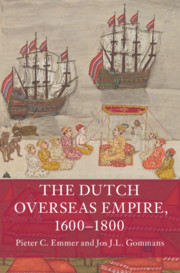Book contents
- The Dutch Overseas Empire, 1600–1800
- Additional material
- The Dutch Overseas Empire, 1600–1800
- Copyright page
- Contents
- Figures
- Cover Image
- Maps
- Note on Terminology
- Preface
- Frontispiece
- Introduction
- Part I The Grumbling Hive
- Introduction
- 1 The Eighth Province
- 2 The Empire at Home
- 3 Dialogue
- Conclusion
- Part II The Atlantic World
- Part III Monsoon Asia
- Coda
- References
- Index
1 - The Eighth Province
from Part I - The Grumbling Hive
Published online by Cambridge University Press: 29 September 2020
- The Dutch Overseas Empire, 1600–1800
- Additional material
- The Dutch Overseas Empire, 1600–1800
- Copyright page
- Contents
- Figures
- Cover Image
- Maps
- Note on Terminology
- Preface
- Frontispiece
- Introduction
- Part I The Grumbling Hive
- Introduction
- 1 The Eighth Province
- 2 The Empire at Home
- 3 Dialogue
- Conclusion
- Part II The Atlantic World
- Part III Monsoon Asia
- Coda
- References
- Index
Summary
In the first chapter of Part I the authors discuss the rise and decline of the two Dutch monopoly companies, and how they, formally and informally, operated in the Dutch Republic, Asia and the Atlantic. The histories of these two companies are very different. The Dutch West India Company, operating in the Atlantic, was always threatened by competitors such as private traders, Dutch merchants who used foreign companies to get around the monopoly, and French and English competitors. The Dutch East India Company, the largest enterprise in the world, employing at the height of its existence about 40,000 personnel, went bankrupt not because of the competition from other trading houses in the Netherlands, but because the directors of the Company were aware which products brought in profits and which did not, but had no idea about the total financial results. In order to increase its turnover, the Company switched from the trade in spices to that of Indian textiles and Chinese porcelain, which necessitated larger ships and more personnel, resulting in lower profit rates. This chapter ends with a discussion of the shrinking naval and military capacity of the Dutch Empire in comparison with its main European rivals.
Keywords
- Type
- Chapter
- Information
- The Dutch Overseas Empire, 1600–1800 , pp. 17 - 57Publisher: Cambridge University PressPrint publication year: 2020



